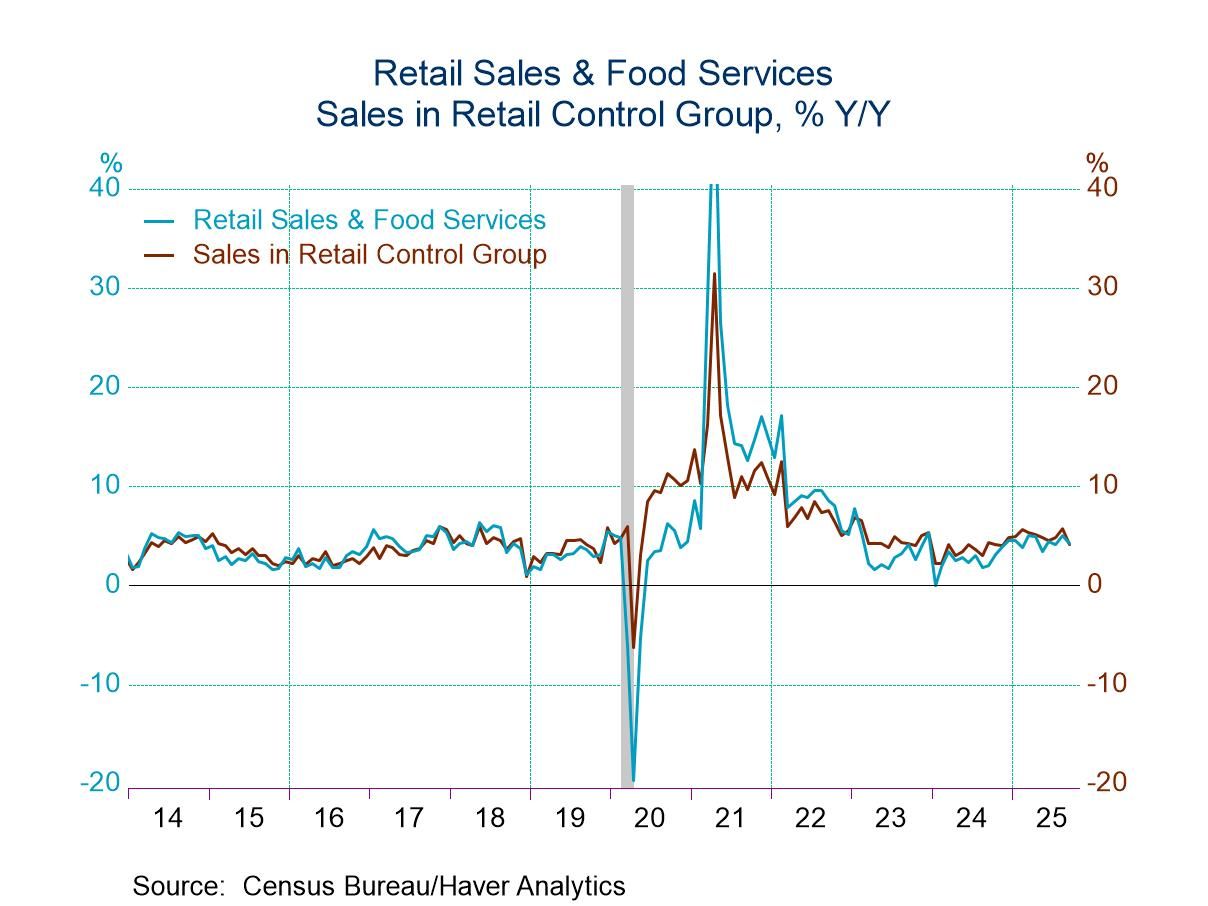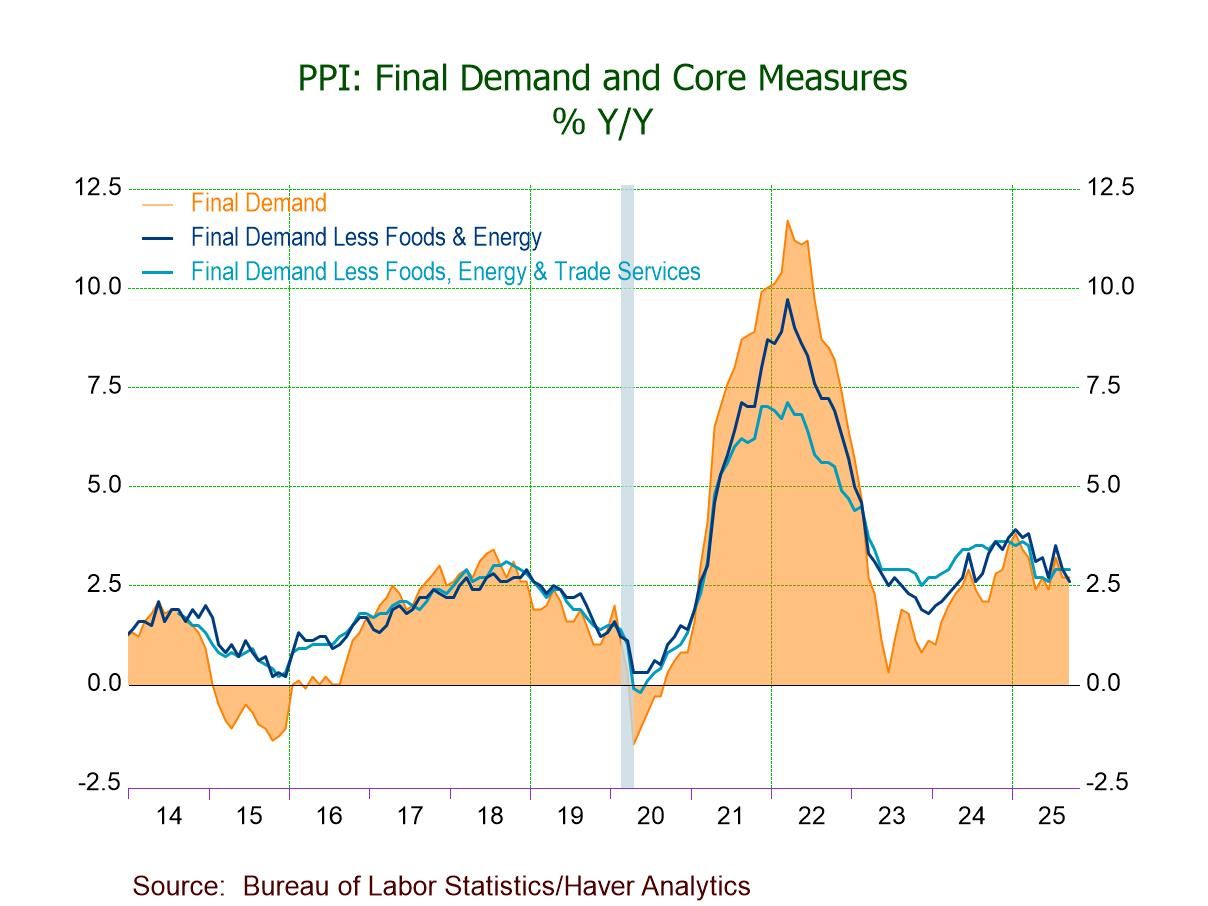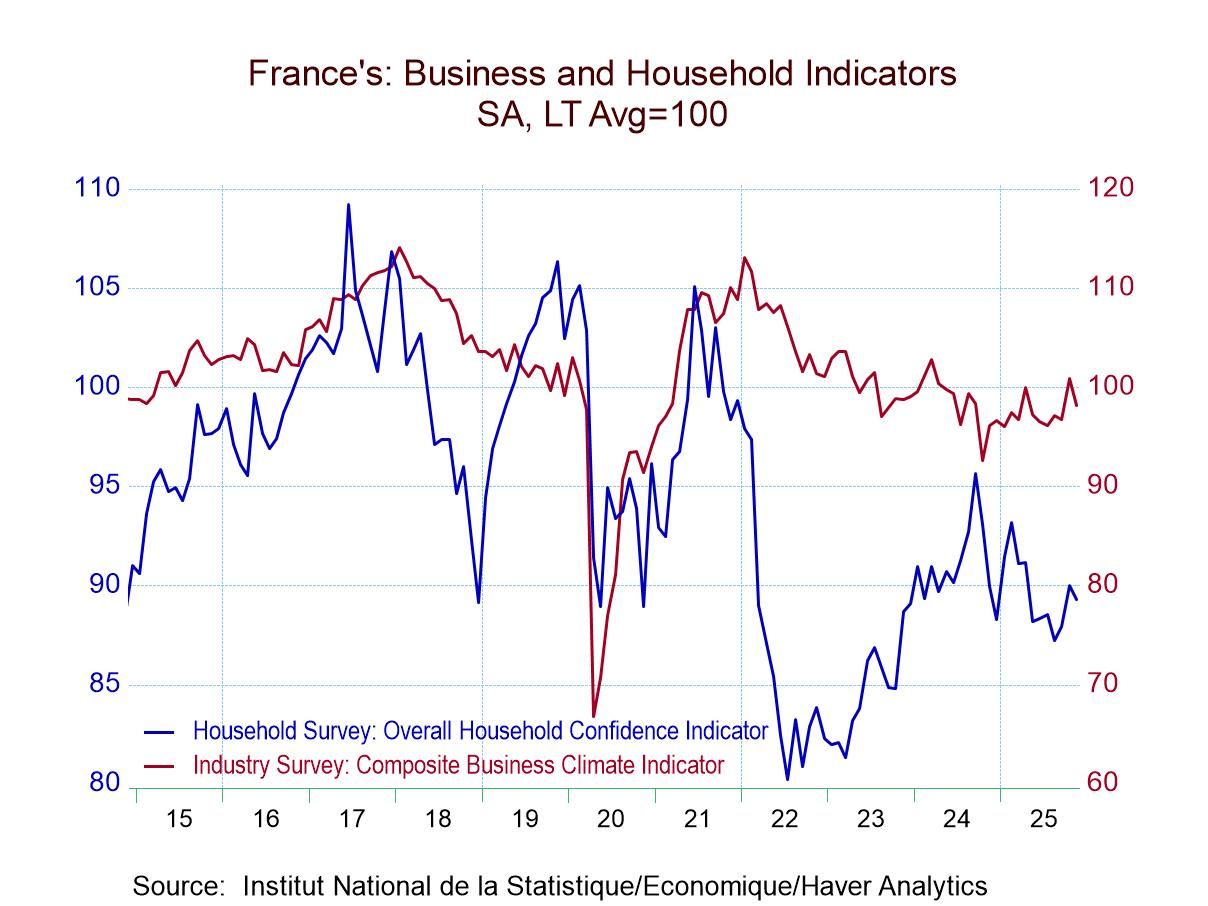 Global| Feb 27 2018
Global| Feb 27 2018Global Monetary Center Action: Money Supply Growth Is Slowing
Summary
Money supply growth globally is slowing down in the main monetary center countries. The EMU is only barely an exception to this, but if we look at the growth of real money balances, the EMU is also experiencing a slowdown. While there [...]
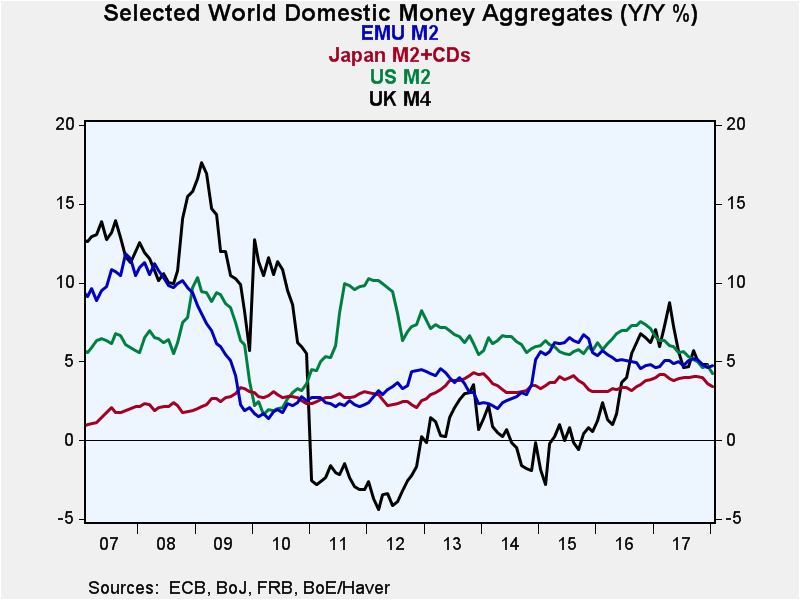 Money supply growth globally is slowing down in the main monetary center countries. The EMU is only barely an exception to this, but if we look at the growth of real money balances, the EMU is also experiencing a slowdown.
Money supply growth globally is slowing down in the main monetary center countries. The EMU is only barely an exception to this, but if we look at the growth of real money balances, the EMU is also experiencing a slowdown.
While there is excitement about the global growth pick up, central banks actually are tightening policy or talking about monetary policy tightening. Central banks articulate policy these days in terms of interest rate levels and targets and by all measures global policies are accommodative on that score even where rate hikes are in progress. But that is not to deny that money supplies are slowing down or that the growth in nominal money supply is barely sufficient to accommodate moderate inflation and weak growth in many cases. Real money balances are showing a growth rate that is barely tolerable in most instances over 12 months and the three-month growth in real money balances is starting to look more hostile to growth.
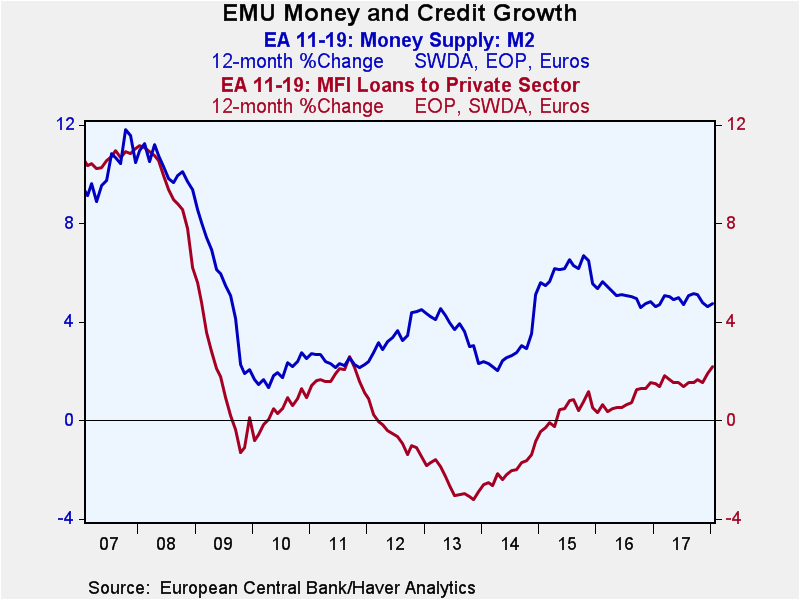 EMU money growth rate ticks lower as credit growth speeds up
EMU money growth rate ticks lower as credit growth speeds up
In the EMU, monetary conditions are relatively generous. Nominal money growth is 4.8% over 12 months and at a 4.6% annualized pace over three months. Private credit growth in the EMU has picked up from a pace of 2.2% over 12 months to a 3.8% pace over three months.
Viewed in real terms, however, EMU policy looks much less accommodative. While real money balances are up at a 3.4% annual rate over 12 months, growth is down to a 1.6% annual rate over three months. Private credit, which is up by 0.9% over 12 months in real terms, is up at a 0.8% pace over three months. Neither of those metrics is particularly favorable for growth.
In the U.S. money growth has been in the 5.7% to 5.4% range over the last two to three years and money growth is down to a 4.2% pace over 12 months and, further, to a 2.4% pace over three months. Real money balances that are up by 2% over 12 months are now shrinking over three months and six months. That is hostile to growth and will be troublesome if it continues. Money growth rates suggest that policy is tighter than analysts' casual judgements suggest that are made by looking at levels of interest rates.
In the U.K. nominal money growth has slowed to a 4.2% pace over 12 months and is down to a 1% pace over three months. In real terms, U.K. money balances are up by less than 1% over 12 months and are falling at -1.7% annualized rate over three months. This also is an outright contraction in policy- rate levels aside.
In Japan, a relatively generous M2-plus CD growth rate of 3.4% over 12 months collapses to a 1.7% annual rate over three months. In real terms, growth in this same money measure is up by 2.1% over 12 months and is falling at a 2.6% annual rate over three months. This is very surprising for a country with its foot still pressed on the monetary accelerator.
The rise in energy prices and its impact on headline inflation seems to be responsible for some of this 'real balance' restrictiveness since oil prices have been rising at a 131.7% annual rate over the most recent three months compared to a more 'modest' 20.5% gain over 12 months.

Still, what we see here is somewhat disturbing. Stimulus is not improving in monetary growth terms and in real trends stimulus is being withdrawn. In the U.S. and U.K., the central banks have shifted to actively tightening interest rate policy. In the U.S., the Fed is both hiking rates and shrinking its balance sheet.
In other data released on the day, we saw that German inflation in February was lower than expected and weakening. The Germans have been in the vanguard in complaining about low ECB interest rates and stimulative policies with the German economy sporting record low unemployment. But even in that EMU country with the lowest unemployment rate, Germany is not mounting inflation pressures. Spain reported a modest inflation bump today. The evolution of inflation continues to be surprising and slow to get in gear.
EMU-area economic sentiment measures showed a drop for the EMU as a whole and declines in eight of the 18 early reporting EMU members. EMU economic sentiment fell relatively sharply month-to-month in February as it did in France where sentiment has dropped for two months running. Still, the EMU and EMU-wide country sentiment rankings remain extremely strong. On the month, the EMU-wide measures showed weaker readings in the industrial sector, for consumer confidence, in retailing and in construction. Only the services metric increased month-to-month, but it remains the weakest sector of the lot.
Japan has logged some weaker GDP growth recently. In the U.S., there are some mixed signals about growth, but there still is overwhelming confidence for future growth rooted in optimism over the new role of fiscal policy.
In short, global monetary policy is headed into a new phase and it may be more complicated than expected. Policies are still accommodative in terms of interest rates and in some cases added central bank liquidity programs are still in existence. In addition, the Federal Reserve in the U.S. has begun to shrink its balance sheet and the ECB has made plans for reducing its liquidity stimulus. While interest rates are low, money growth rates have turned to being less than accommodative. In the language of money policy, it is not possible to refer to global monetary policy as accommodative if one is to look principally at money growth or in some cases at resulting credit growth. I don't expect markets to shift and focus on money growth rates, but these are complications to be aware of.
The focus in markets has shifted to actual growth which has been doing better in many places. And in the U.S., optimism is on growth is laid at the feet of a more expansive fiscal policy. Still, money growth is no longer supportive of growth and more modern ways of looking at interest rates that allow for a tracking of policy though disequilibrium periods suggest that in the U.S. at least low interest rates may exist precisely because they are what the economy still demands. While some want to evaluate interest rates relative to their perceived long-run equilibrium value, an approach that calculates the variable R-Star tries to track the disequilibrium neutral Fed funds rate. Those calculations suggest that at the current market interest rate, rates are clearly closer to being 'right' than 'easy.' Such calculations probably also carry some analytical import for other major monetary economies as well. We can in part make this judgement even in the absence of direct sophisticated calculations by noting that with rates still extremely low (1) growth has not been strong and (2) inflation has remained (globally) below targets. Given those circumstances, maybe there should be more attention paid to the unfolding development of a slowing in monetary growth rates and not such a whole-hog focus on interest rate levels screened by an imprecise understanding of their role and impact.
Robert Brusca
AuthorMore in Author Profile »Robert A. Brusca is Chief Economist of Fact and Opinion Economics, a consulting firm he founded in Manhattan. He has been an economist on Wall Street for over 25 years. He has visited central banking and large institutional clients in over 30 countries in his career as an economist. Mr. Brusca was a Divisional Research Chief at the Federal Reserve Bank of NY (Chief of the International Financial markets Division), a Fed Watcher at Irving Trust and Chief Economist at Nikko Securities International. He is widely quoted and appears in various media. Mr. Brusca holds an MA and Ph.D. in economics from Michigan State University and a BA in Economics from the University of Michigan. His research pursues his strong interests in non aligned policy economics as well as international economics. FAO Economics’ research targets investors to assist them in making better investment decisions in stocks, bonds and in a variety of international assets. The company does not manage money and has no conflicts in giving economic advice.




